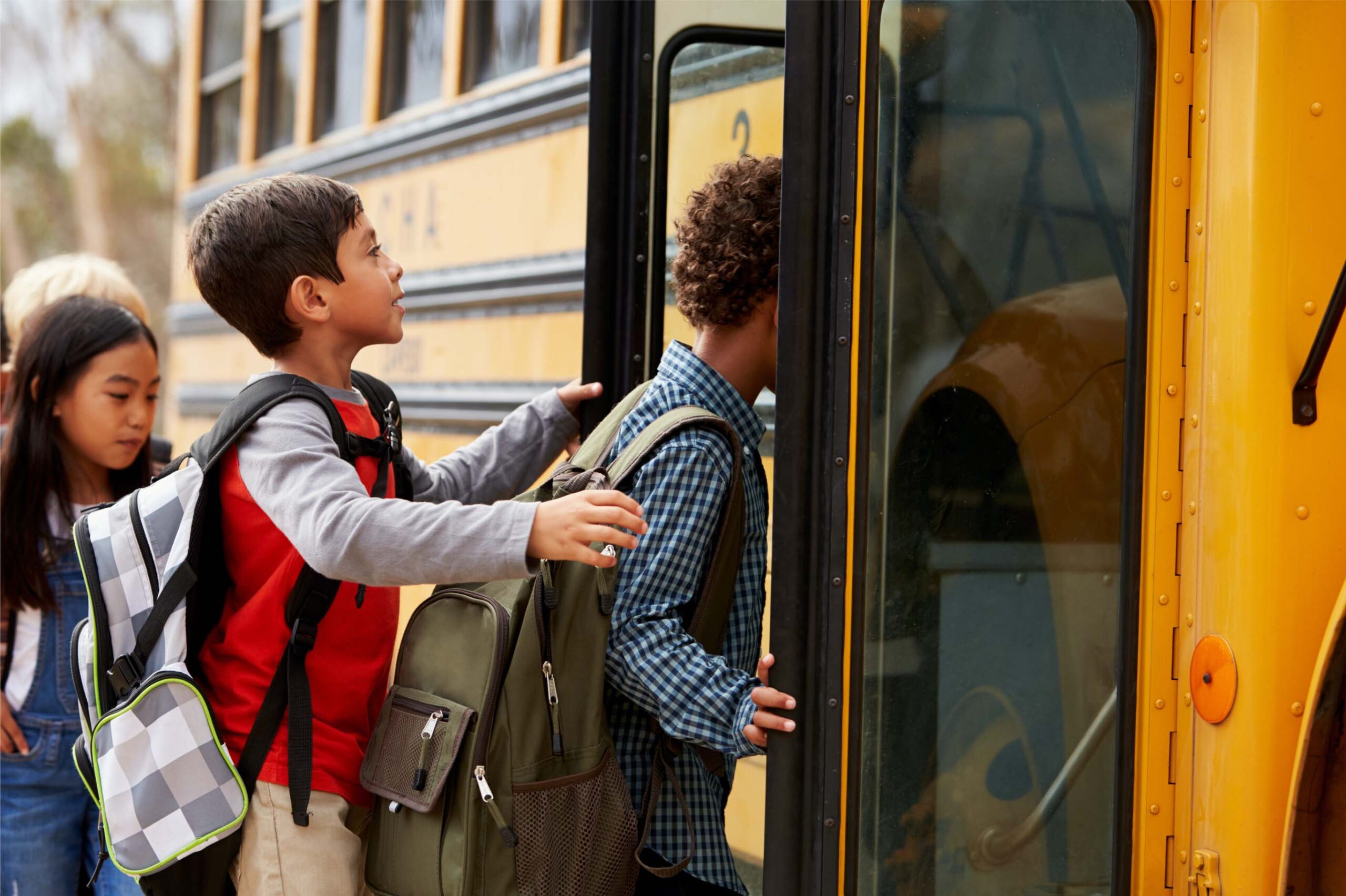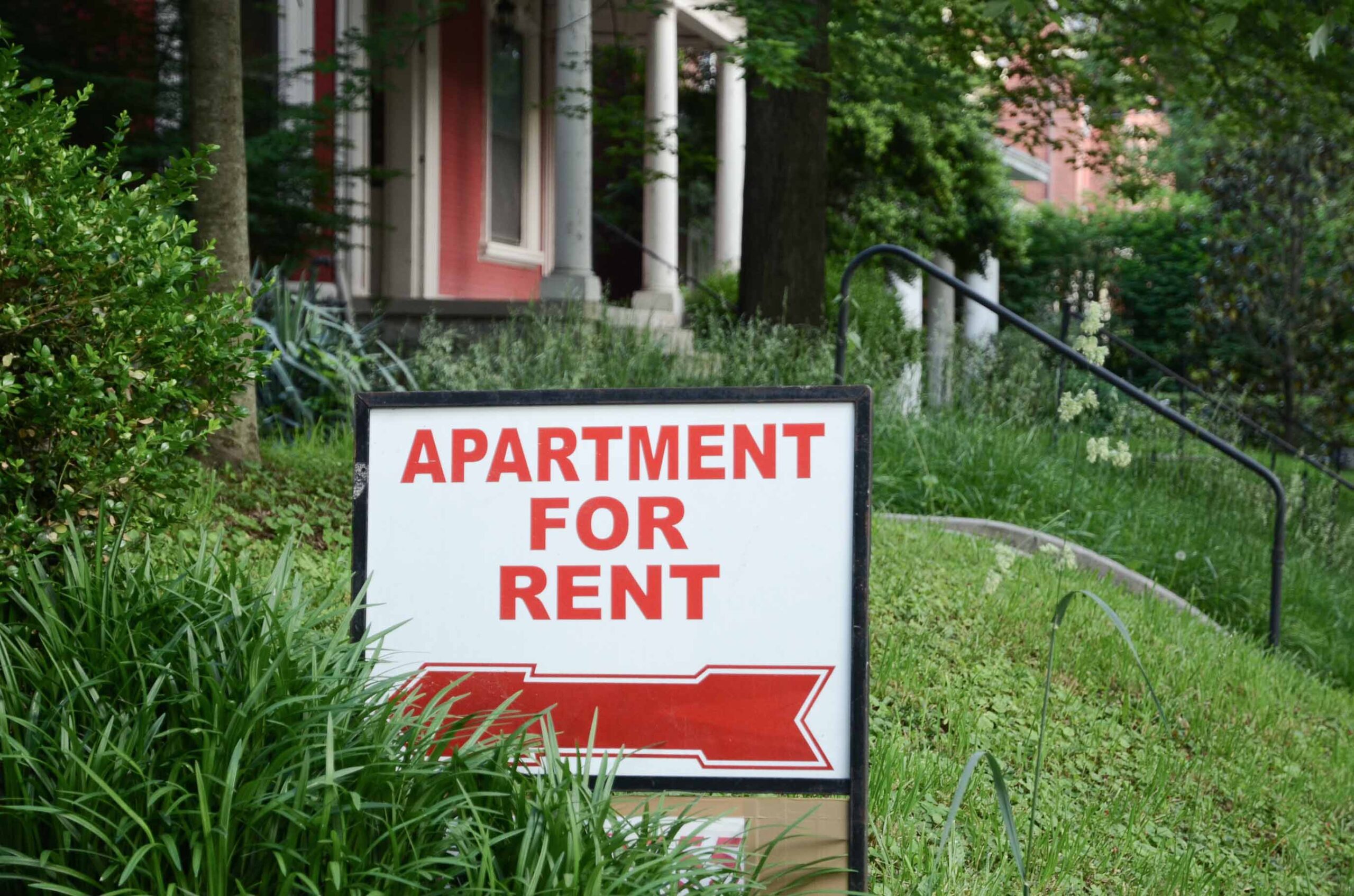Increasing Context Around Our Outcomes
Community Context Review
To understand our educational outcomes, we have to look beyond the classroom and see the whole child.
What is the Community Context Review?
This page includes a synthesis of local data and peer-reviewed literature to help us better understand the context of these conditions and make connections between these conditions and our educational outcomes.
The content on this page looks at environmental factors that present barriers to educational success for children and students of all ages. These factors impact educational success and an individual’s ability to thrive.
This material does not serve as an exhaustive review of literature, but rather a sample to illuminate concepts, raise awareness, and increase understanding of the connections between systemic community conditions and educational outcomes.
The literature review contained in this report was produced by Forsyth Futures, a registered 501(c)(3) organization that provides action-oriented data analysis and reporting services to organizations within Forsyth County. Forsyth Futures studies our community to inform action. If you have questions about Forsyth Futures or about the data contained in this report, please contact info@forsythfutures.org.
The Forsyth Promise 2020 Education Report
The purpose of this report is share community information so that everyone can better understand our educational systems. This report is produced annually by The Forsyth Promise.
We Value Your Feedback
Please use this Google form to provide feedback.
Barriers to Student Success
Education is one of the strongest factors impacting an individual’s health, economic mobility, and wellbeing.
When a child is hungry, faces instability at home, or their family lacks the income to afford basic needs, they encounter barriers to success in education and in life. To better understand our educational outcomes as a community, we must look not only to the classroom, but beyond the classroom as well.
Many children and students of all ages in our community are set up for success or failure before they ever step foot inside a classroom. Barriers to educational success include current and historical conditions that have lasting impacts on our community, both in terms of individual and family wellbeing and community educational outcomes.
Numbers alone do not always tell a complete story. The Forsyth Promise is striving to provide more context and story-telling to illuminate the complex and intersectional factors that impact how learning happens in our community. This approach, paired with data, is critical to better understanding how factors such as bias, discrimination, and housing instability impact not just individuals and families, but our community overall.
Key Finding from the Community Context Review

Significant disparities by race/ethnicity are present across most context measures.
Black and Hispanic/Latino children and youth had worse outcomes than White children and youth for income insufficiency, housing cost burden, physical health, and discipline in school.
Community Demographics
Demographic data includes information on Forsyth County’s children and youth population as well as sub-populations within the county based on factors such as gender, age, and race/ethnicity. View data notes for community demographics.
Data Visualization
Demographics of Children and Youth Population (2010-2019)
Use the dropdown menu below to view data on different groups.
Key Takeaways
Child and youth populations have remained about the same over the last 10 years.
There were small demographic changes by race/ethnicity.
The Hispanic/Latino child and youth population has grown slightly from 19% in 2010 to 22% of the child and youth population in 2019.
Data Notes
Demographics of Children and Youth Population
Data source: CDC WONDER, Bridged-Race Population Estimates

Barriers to Student Success
Income Insufficiency & Low Wages
It is well documented that children and students from households with lower levels of income face many challenges related to poor education outcomes.
Income Insufficiency and Low Wages
Through a Local Data Lens
Income insufficiency is a measure of financial hardship that compares family income to estimated family expenses. While poverty rates are widely used as a measure of financial hardship, there is evidence that poverty rates rely on outdated assumptions, which can lead to underestimated family expenses and financial hardship. The income insufficiency measure is designed to supplement analysis of financial hardship based on poverty rates by accounting for factors not considered in poverty calculations. View data notes for this measure.
Data Visualization
Income Insufficiency (2018)
Use the dropdown menu below to view data on different groups.
Key Takeaways
Almost half of all children lived in households experiencing income insufficiency.
Black and Hispanic/Latino children and youth under 18 years old were living in households experiencing insufficient income at a higher rate compared to White children and youth, 66%, 76%, and 20%, respectively.
Income Insufficiency and Low Wages
Through a Scan of Published Literature
About this Literature Scan | Glossary terms used in this section: economic inequality, economic mobility, income achievement gap, income insufficiency.
Economic inequality continues to impact various aspects of society, including education outcomes, and has resulted in the widening of the income achievement gap [1]. The income achievement gap is described as the academic achievement gap between students from high-income households compared to students from households with lower levels of income [1]. Experts agree, the widening of the achievement gap has serious consequences for student educational success, economic mobility, and wellbeing throughout the lifespan [1].
It has been well documented that children and students from households with lower levels of income face many challenges related to poor education outcomes like lower testing scores [2]. Households with lower levels of income may also experience chronic stressors associated with limited access to quality goods and services and insufficient funds to cover unexpected expenses [3]. For children, this may impact their advancement through the K-12 education system and present additional challenges that their higher-income peers and those in private and well-funded institutions may not have to face [2].
As community members invest in our children and a thriving future, it’s important to consider how low wages and limited earning opportunities can impact our students, and the potential for their academic success and social and economic mobility. Low wages, income insufficiency, and the growing income achievement gap are complex issues that cannot be solved without sufficient financial investment, and a multisector approach that is inclusive of the broader community, educators, schools system, and policy makers [1]. Funding and access to quality educators, resources, materials and socioeconomically diverse school settings is also crucial to creating a more equitable education system [1] where all students are able to be successful.
Key Takeaways
Disparities among key measures of success, like the income achievement gap, are symptoms of income inequality.
Having families with insufficient resources to meet basic needs impacts many factors of community wellbeing, as well as the ability of individuals and families to thrive.
Locally, disparities are present in income insufficiency rates by race/ethnicity.
About half of Black and 62% of Hispanic/Latino residents lived in families with insufficient income compared to 22% of White, non-Hispanic residents.

Stories of Lived Experience
“Low wages for any family will hinder them from getting the necessary materials needed.”
MRS. SYLVIA ADAMS, Executive Director, The Salvation Army Ken Carlson Boys & Girls Club
Go to the lived experience interviews

Stories of Lived Experience
“Right now, we don’t have equal pay. That’s real. And that’s something that we cannot deny.”
GREIZY BECKLES-ARAQUE, Parent of a Kindergartener and 6th Grader in WS/FCS; Parent Advocate, Child Care Resource Center
Go to the lived experience interviews
Data Notes
Income Insufficiency
Forsyth Futures developed the income insufficiency measure to supplement analysis of financial hardship based on poverty rates. The measure accounts for factors not considered in poverty calculations.
This measure considers expense estimates, which represent the lowest cost of living that can be generally assumed for various family situations. This is followed by an analysis of income insufficiency rates, which are the percentages of residents living in families with incomes that are lower than their estimated expenses. The expense estimates used to calculate income insufficiency rates are based on demographic and geographic factors not considered in poverty calculations, as well as how each expense changes over time.
View a detailed methodology and additional data notes for this measure.
Forsyth Futures is a registered 501(c)(3) organization that provides action-oriented data analysis and reporting services to organizations within Forsyth County, North Carolina. Forsyth Futures studies our community to inform action. If you have questions about Forsyth Futures or about the data contained in this report, please contact info@forsythfutures.org.

Barriers to Student Success
Safe and Stable Housing
Housing stability is one of the most critical components of academic readiness and success.
Safe and Stable Housing
Through a Local Data Lens
When a significant portion of a household’s income is devoted to housing expenses, there is less money available to cover other basic needs such as food, health care, and transportation — a situation which may result in financial insecurity. Housing cost burden measures housing expenses as a percentage of household income. The threshold for housing cost burden is when a household spends more than 30% of their income on housing expenses. Expenses include rent payments, mortgage payments, utilities, insurance, and other fees. The data below represents the percent of children who are living in households experiencing housing cost burden. View data notes for this measure.
Data Visualization
Child/Youth Housing Cost Burden (2015-19)
Use the dropdown menu below to view data on different groups.
Key Takeaway
Disparities were present in housing cost burden by race/ethnicity.
Black and Hispanic/Latino children were disproportionately living in households experiencing housing cost burden compared to White children.
Safe and Stable Housing
Through a Scan of Published Literature
About this Literature Scan | Glossary terms used in this section: affordable housing, housing cost burden, housing stability, severe housing cost burden
A number of complex factors impact educational outcomes for children and students, and increasing research points to housing stability as one of the most critical components of academic readiness and success [2]. Researchers suggest that homelessness or unstable housing is damaging to academic achievement and can have lasting implications for academic performance, high school graduation, the pursuit of a post-secondary degree, as well as general wellbeing in adulthood and throughout the lifespan [4]. Children who experience homelessness, unstable housing and/or frequent residential moves can have difficulty building relationships with their teachers and peers, adjusting to new classroom routines and settings, and lose critical classroom and instruction time which can hinder their ability to transition from grade to grade [4].
Housing stability is a complex issue facing many communities, and a growing amount of literature reports that if properly addressed, housing could “support pathways to academic success” [2]. The four dimensions of housing viewed as most critical by Cunningham and MacDonald include, housing quality, residential stability, affordability, and location of neighborhood [2].
When thinking about barriers to safe and stable housing, housing cost and affordability are critical to the discussion. If housing costs exceed 30% of a family’s income they are considered to be ‘housing cost burdened;’ families are considered to be ‘severely housing cost burdened’ when 50% or more of their income is used to cover housing cost [3]. When families are forced to allocate more money to pay for housing, they have less money for additional needs and they are less able to save or cover unexpected expenses in the event of an emergency; which makes them more susceptible to housing loss or displacement [3]. Allocation of more funds to housing may also force families to forgo additional supportive resources such as tutoring and extra curricular activities for their children [2].
Key Takeaways
Stable, affordable housing is essential for a student’s well being, success, and future outcomes.
Housing disruptions or the absence of stable housing can directly impact a student’s participation and experience in the classroom.
Housing and/or neighborhood location impacts access to basic needs and services.
Safe and stable housing supports positive experiences, relationship building, and progression through school.

Stories of Lived Experience
“It’s easier for a child to concentrate on learning when they don’t have to worry about the eviction notice on the front door. […] We must provide a stable environment for this next generation. It should be a norm for our children not a luxury for some.”
TONYA L. WOODS, Parent of a 5th Grade WS/FCS Student
Go to the lived experience interviews
Data Notes
Child/Youth Housing Cost Burden
Data source: ACS public use microdata sample (PUMS). Washington, D.C. :U.S. Census Bureau.

Barriers to Student Success
Mental Health and Wellbeing
Unmet childhood or adolescent psychosocial needs or concerns can have a lasting impact on students’ ability to learn and as they continue to develop throughout the lifespan.
Mental Health and Wellbeing
Through a Local Data Lens
Mental health and wellness is a critical factor in student success. To measure youth mental health and wellness we are using a self-report survey that is administered by the Forsyth County Department of Public Health every few years called the Youth Risk Behavior Survey. The most recent year of data available is for high school students from 2017. View data notes for this measure.
Data Visualization
Mental Health and Wellbeing (2017)
Use the dropdown menu below to view data on different groups.
Key Takeaways
One in five students reported having considered suicide.
Females reported experiencing depression and considering suicide at higher rates than males.
Mental Health and Wellbeing
Through a Scan of Published Literature
About this Literature Scan | Glossary terms used in this section: mental health, Youth Risk Behavioral Survey
Mental health and wellness is an important component of the success and wellbeing of children and students. Healthy development in the early years provides children with a foundation for lifelong physical and mental wellbeing.
Students experiencing mental health challenges can have difficulty concentrating, making connections with peers, and difficulty succeeding in school [5]. It is important for students and families to have access to resources and supportive services to support shared understanding, provide necessary screenings, and help families navigate mental health related needs [5,6].
A growing number of school systems and community supportive services recognize the need and opportunity to better equip and educate our students, parents, and teachers about mental health and available resources [6]. Students can experience a lot both at home, in school and in their day to day life that they may not always know how to manage. Factors like students experiencing bullying, conflict with peers, threats of violence, and or rejection can lead to experiencing mental health related challenges like symptoms of depression and anxiety or difficulty adjusting and self regulating [7].
Unmet childhood or adolescent psychosocial needs or concerns can have a lasting impact on students ability to learn and as they continue to develop throughout the lifespan [8]. A key component of meeting this need is being able to identify potential mental health concerns or challenges and connect students and families to relevant, culturally competent, and affordable services.
In an effort to promote mental health wellness and preventive care, researchers suggest utilizing school-based settings to screen and connect students and parents/caregivers to supportive resources [5,6]. Teachers and students spend a significant amount of time in the classroom and teachers may observe behaviors that could be better supported if properly addressed by being connected to a qualified professional [8,9].
While considerable efforts have been made to support students, some schools and service providers may have difficulty sustaining programs and practices that meet the needs of students, families, and the community due to funding [6,8]. As a community we must continue to educate, invest, and support our students and families around mental health and wellness in order for them to thrive and be successful.
Key Takeaways
Mental health and wellbeing is an important component of student wellbeing and success.
Insufficient access to resources can negatively affect students and families who may be navigating challenges associated with mental health.
Mental Health and Wellbeing
Resources for Mental Health and Wellbeing
Childhood Wellbeing and Mental Wellness Field Guide
Winston-Salem/Forsyth County Schools (WS/FCS) and local supportive service organizations offer a number of mental health supports like parenting tips, crisis management teams, referrals services. These supports are in place to promote better understanding of how mental health behaviors show up in the classroom, share ways to develop coping strategies for students and families, and to train and assist teachers and service providers in expanding their knowledge and services.
Mental and Behavioral Health Resources for Children Ages 0-8
The Mental Health Action Team, part of The Forsyth Promise’s Birth to Third Grade Action Network, has put together a web-based guide to mental and behavioral health for parents of young children. This web-based resource was created to increase awareness among parents about how to identify mental and/or behavioral health challenges in young children so they can take action and know how to seek help when needed.
Links to Resources
Childhood Wellbeing and Mental Wellness Field Guide
An guide to help parents and caregivers understand and support their child’s healthy development.

Stories of Lived Experience
“People are scared to discuss mental health. A lot of people perceive mental health as a weakness.”
MRS. SYLVIA ADAMS, Executive Director, The Salvation Army Ken Carlson Boys & Girls Club
Go to the lived experience interviews

Stories of Lived Experience
“In my case, for the Hispanic population, this s something that is not talked about. There’s just no conversation about mental health… In my culture, that’s equal to being weak…”
GREIZY BECKLES-ARAQUE, Parent of a Kindergartener and 6th Grader in WS/FCS; Parent Advocate, Child Care Resource Center
Go to the lived experience interviews

Stories of Lived Experience
“Mental health and wellness play a major role in the overall wellbeing of a student’s success. Students need to understand how to cope, function and overcome adversity.”
TONYA L. WOODS, Parent of a 5th Grade WS/FCS Student
Go to the lived experience interviews

Stories of Lived Experience
“If we don’t address these and acknowledge that mental health is real, we’re not going to be successful at all because we are not going to know how to deal with it. […] Sometimes it’s just hard to get past that Not MY child and that to me is with any with any ethnicity. It’s first getting past that denial — there’s nothing wrong with me, my child…”
NATASHIA ALEXANDER, Parent of a Kindergartener in WS/FCS; Child Care Resource Center
Go to the lived experience interviews
A Child’s Mind is as Much a Part of Who They are as Their Body.
A child’s early years — from birth through age eight — are very important for all areas of learning and growth. That includes physical growth and health, emotional and behavioral growth, as well as logic, reasoning, socializing, and thinking. Healthy development in the early years gives children a foundation for lifelong health and well-being.
We are putting the finishing touches on this field guide!
The Mental Health Action Team of the Birth to Third Grade Action Network is working hard to put the finishing touches on this important community resource. If you click the button below we will email you to let you know when it is ready.
Data Notes
Mental Health and Wellbeing
Data Source: Department of Public Health, Youth Risk Behavior Survey: https://www.forsyth.cc/PublicHealth/assets/documents/2019_WSFCS_YRBS_Highlights.pdf

Barriers to Student Success
Physical Health
A student’s health status can impact behaviors, academic performance, school attendance, and self-esteem.
Physical Health
Through a Local Data Lens
Physical health is a critical factor in student success. To measure youth physical health we are using a self-report survey that is administered by the Forsyth County Department of Public Health every few years, the Youth Risk Behavior Survey. The most recent year of data available is for high school students from 2017. View data notes for this measure.
Data Visualization
Physical Health (2017)
Use the dropdown menu below to view data on different groups.
Key Takeaways
There are differences in reported physical health behaviors and outcomes by race/ethnicity.
Black and Hispanic/Latino high school students reported poorer health behaviors and outcomes compared to White high school students.
Physical Health
Through a Scan of Published Literature
About this Literature Scan | Glossary terms used in this section: Youth Risk Behavioral Survey
It’s widely accepted that our early experiences can impact our development and outcomes throughout the lifespan [10]. Early childhood is a period characterized by significant development that is impacted, positively or negatively, by external factors like stress, poverty, and limited access to resources [10].
A student’s health status can impact behaviors, academic performance, school attendance, and self-esteem [11]. When thinking about student outcomes, it is important to consider measures of both academic and health outcomes [11]. Food and nutrition programs and policies should be considered to ensure students have access to free and reduced lunch; such programs have been shown to reduce hunger and promote positive academic outcomes among students [11]. Health promotion programs and efforts in schools must consider long-term strategies to sustain their efforts and increase their capacity to ensure students are afforded the support and services needed to thrive and be academically successful [12].
Researchers argue that if we hope to better support individuals throughout the lifespan we must address “poorly constructed systems” that impact childhood health; if not addressed, these poorly constructed systems can impact childhood health outcomes into adulthood [10]. Researchers suggest developing a framework that considers social, cultural, and economic factors that impact health outcomes that could then inform program design, and investment in early childhood policies [10]. The policies should also consider collaborative opportunities with families and communities in support of healthy child development [10].
Key Takeaways
A student’s health status can impact behaviors, academic performance, school attendance, and self-esteem.
When thinking about student outcomes, it is important to consider measures of both academic and health outcomes.
Researchers suggest developing a framework that considers social, cultural, and economic factors that impact health outcomes that could then inform program design, and investment in early childhood policies.

Stories of Lived Experience
“…you don’t feel safe in your house, you’re not sleeping…”
NATASHIA ALEXANDER, Parent of a Kindergartener in WS/FCS; Child Care Resource Center
Go to the lived experience interviews

Stories of Lived Experience
“If a child is hungry, their attention is not there. If their attention is not present, they will not retain as well affecting any assessment they may be given in school.”
ANONYMOUS, Exceptional Children’s Teacher, WS/FCS
Go to the lived experience interviews
Data Notes
Physical Health
Data Source: Department of Public Health, Youth Risk Behavior Survey: https://www.forsyth.cc/PublicHealth/assets/documents/2019_WSFCS_YRBS_Highlights.pdf

Barriers to Student Success
Discrimination and Disparities in Discipline
It is well documented that Black and Brown students are more likely to face harsher disciplinary action when compared to their white peers.
Discrimination and Disparities in Discipline
Through a Local Data Lens
Time that students spend out of the classroom for disciplinary reasons can disrupt learning. Importantly, students of color are more likely to receive a suspension. This measure represents the short-term suspension rate or the number of combined in-school and out-of-school suspension incidents per 100 students. All the suspension incidents reported here are for 10 days or fewer. View data notes for this measure.
Data Visualization
Disproportionate Discipline (2016-2020)
Use the dropdown menu below to view data on different groups.
Key Takeaways
Disparities were present in discipline by race/ethnicity.
The discipline rate for Black students is almost five times greater than that of White students, while Hispanic/Latino have a discipline rate that is more than double that of White students.
Disparities were present in discipline rates by gender.
Male students had a discipline rate that was more than double that of female students.
Discrimination and Disparities in Discipline
Through a Scan of Published Literature
About this Literature Scan | Glossary terms used in this section: discrimination, implicit bias.
Discrimination and bias are deeply rooted in a number of systems and polices in the U.S. and throughout the world. A considerable amount of research has been done highlighting the specific impact of racial discrimination and bias and how it shows up in various aspects of life [13]. In addition to literature, it’s important to acknowledge the very real lived experiences of individuals, groups, and cultures that continue to navigate various forms of discrimination, and experience harm from discriminatory practices. For the purposes of this discussion, we are focusing on the impact of racial discrimination and bias on our education system, student discipline, and its impact on educational outcomes.
The education system in the U.S. as it stands does not fully support the equitable growth and development of all students, especially students with intersectional identities such as class, race, ethnicity, nationality, ability, etc. (e.g. a student with a disability who is also African American and experiencing poverty) [13]. A number of factors like school discipline, general policies, poor teacher-student interactions and bias within education policies and practices can negatively impact student experience, and the ability of students to thrive and be successful in school [13,14,15].
It has been well documented that Black and Brown students are more likely to face harsher disciplinary action when compared to their white peers [14,15]. Experts point to the role of implicit bias and the complex interaction that occurs between students, school administrators, teachers, and school security when an incident occurs [14]. Implicit bias can be described as “how attitudes and stereotypes impact our understanding and decision-making in an unconscious way” [14]. So when a student gets in trouble there are a number of factors at play that can impact the way the infraction is viewed by administration, security, and/or teachers and, therefore, how the student is disciplined and the lasting consequences they face [14].
Harsh disciplinary action can have a number of effects on a student, such as a loss of classroom instruction time or even interactions with law enforcement due to referral or arrest which can have lasting implications for a student’s wellbeing, and record [15]. A school’s administration and leadership are responsible for the safety of all of their students, therefore a discipline policy and procedure must be in place. To accomplish this, researchers suggest developing strategies that reduce “racialized over-discipline,” investing in training for educators related to racial literacy and implicit bias, as well as more holistic models like restorative justice that center community and help students navigate conflict [15].
Key Takeaways
A considerable amount of research has been done highlighting the specific impact of racial discrimination and bias and how it shows up in various aspects of life.
A number of factors like school discipline, general policies, poor teacher-student interactions and bias within education policies and practices can negatively impact student experience, and the ability of students to thrive and be successful in school.
Harsh disciplinary action can have a number of effects on a student, such as a loss of classroom instruction time or even interactions with law enforcement due to referral or arrest which can have lasting implications for a student’s wellbeing, and record.

Stories of Lived Experience
“It goes without saying discrimination is very prevalent in the education system.”
ANONYMOUS, Parent of WS/FCS 4th grader
Go to the lived experience interviews

Stories of Lived Experience
“Discrimination and bias will continue to be in our schools. I think we have to just continue to push minorities and work hard. I have learned even as an adult, you see things and know things are not fair, in schools, in the workplace, or you see people being discriminated against, but what can you do.”
MRS. SYLVIA ADAMS, Executive Director, The Salvation Army Ken Carlson Boys & Girls Club
Go to the lived experience interviews
Community Context Review
Literature Scan Citations
| 1 | Reardon, S. F. (2013). The widening income achievement gap. Educational leadership, 70(8), 10-16. |
| 2 | Cunningham, M., & MacDonald, G. (2012) Housing as a platform for improving education outcomes among low-income children. Urban Institute. What Works Collaborative. |
| 3 | Office of Disease Prevention and Health Promotion. (2020). Housing instability. https://www.healthypeople.gov/2020/topics-objectives/topic/social-determinants-health/interventions-resources/housing-instability |
| 4 | Galvez, M., & Luna, J. (2014). Homelessness and housing instability: The impact on education outcomes. American Psychological Association. |
| 5 | Skalski, A. K., & Smith, M. J. (2006). Responding to the mental health needs of students. Principal Leadership, 7(1), 12-15. |
| 6 | Essex, M. J., Kraemer, H. C., Slattery, M. J., Burk, L. R., Thomas Boyce, W., Woodward, H. R., & Kupfer, D. J. (2009). Screening for childhood mental health problems: Outcomes and early identification. Journal of Child Psychology and Psychiatry, 50(5), 562-570. |
| 7 | Bosworth, K., Ford, L., & Hernandaz, D. (2011). School climate factors contributing to student and faculty perceptions of safety in select Arizona schools. Journal of school health, 81(4), 194-201. |
| 8 | Atkins, M. S., Hoagwood, K. E., Kutash, K., & Seidman, E. (2010). Toward the integration of education and mental health in schools. Administration and policy in mental health, 37(1-2), 40–47. https://doi.org/10.1007/s10488-010-0299-7 |
| 9 | Reinke, W. M., Stormont, M., Herman, K. C., Puri, R., & Goel, N. (2011). Supporting children's mental health in schools: Teacher perceptions of needs, roles, and barriers. School Psychology Quarterly, 26(1), 1. |
| 10 | Mistry, K. B., Minkovitz, C. S., Riley, A. W., Johnson, S. B., Grason, H. A., Dubay, L. C., & Guyer, B. (2012). A new framework for childhood health promotion: the role of policies and programs in building capacity and foundations of early childhood health. American journal of public health, 102(9), 1688–1696. https://doi.org/10.2105/AJPH.2012.300687 |
| 11 | Berezowitz, C. K., Bontrager Yoder, A. B., & Schoeller, D. A. (2015). School gardens enhance academic performance and dietary outcomes in children. Journal of School Health, 85(8), 508-518. |
| 12 | Hoyle, T. B., Samek, B. B., & Valois, R. F. (2008). Building capacity for the continuous improvement of health‐promoting schools. Journal of School Health, 78(1), 1-8. |
| 13 | Annamma, S., & Morrison, D. (2018). Identifying dysfunctional education ecologies: A discrit analysis of bias in the classroom. Equity & Excellence in Education, 51(2), 114-131. https://www.researchgate.net/profile/Subini_Annamma/publication/328080535_Identifying_Dysfunctional_Education_Ecologies_A_DisCrit_Analysis_of_Bias_in_the_Classroom/links/5bb66c3e92851c7fde2e8bb0/Identifying-Dysfunctional-Education-Ecologies-A-DisCrit-Analysis-of-Bias-in-the-Classroom.pdf |
| 14 | Staats, C. (2014). Implicit racial bias and school discipline disparities. Exploring the connection. |
| 15 | Nance, J. P. (2015). Over-disciplining students, racial bias, and the school-to-prison pipeline. U. Rich. L. Rev., 50, 1063. |
Pathways to Action
We can work together to organize, advocate, and drive positive change.
When we work together, we have the power to change our systems for the better. We hope those who read this report feel encouraged and inspired to get involved. Local groups are working to support and improve our systems and there are many ways for anyone to get involved.
Get Engaged in the Community Conversation on Education
Join us for Be The Change: Making Good on Our Promise, a digital convening designed to bring people together and discuss coordinated community-wide action to increase equity and improve outcomes.
Learn About Work Being Done to Improve Our Educational Systems
Initiative Action Profiles highlight current, collaborative, community work to improve our systems of education.
Help Improve this Report by Sharing Your Feedback
Each year, The Forsyth Promise publishes a community report on Forsyth County's educational systems. By taking just a moment to share your thoughts on the 2020 report, you can help make future reports better.
Help Us Build a More Complete Perspective
Help us understand important aspects of our educational systems that this report may have overlooked or suggest new information to improve the report.
Find a Volunteer Opportunity that's Right for You
Everyone in our community possesses important gifts, skills, and talents they can use to help make Forsyth County a better place to live.
Share the Story of Your Lived Experience
Forsyth County residents of all ages, lifestyles, and backgrounds can participate in our Lived Experience Lab, through which we capture and share critical community stories about educational experiences.
Data Notes
Disproportionate Discipline
Race/ethnicity and economic status disaggregations are not available for the high school class of 2012.
Data source: Winston-Salem/Forsyth County Schools








